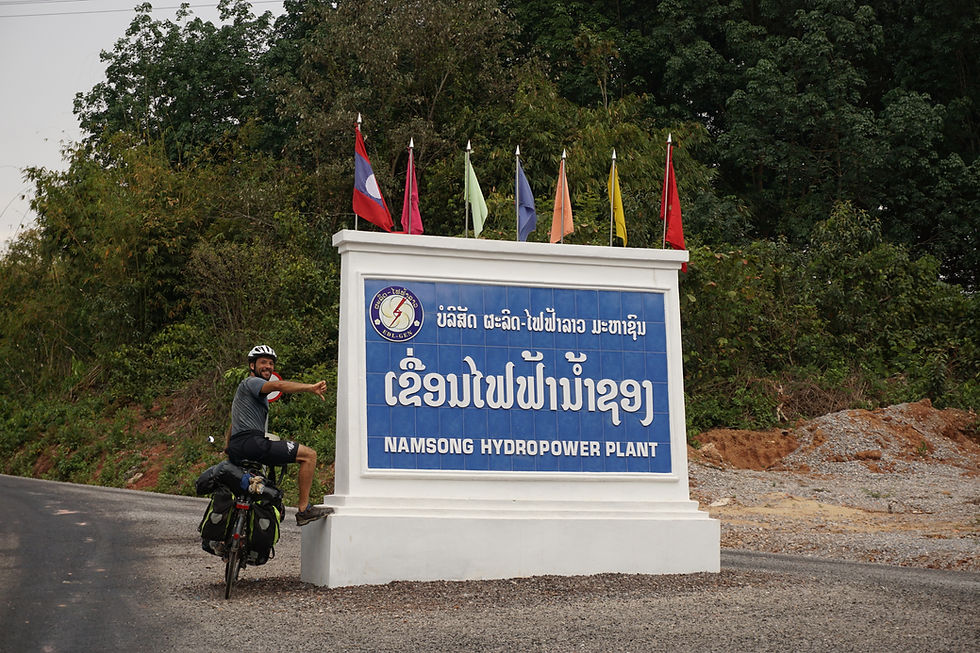Some last thoughts about Laos
- Marleen
- 24. Apr. 2017
- 3 Min. Lesezeit
Laos is rich in natural beauty, a place for travelers to get off the beaten track and getting to know the fascinating Buddhist culture. The people are laid back and relaxed, their favorite phrase being “bor pen yang” - no problem. Laos has an amazing variation in ethnic groups, roughly 150 different ethnic groups exist, many of which live in small, inaccessible villages in the northern mountainous areas.

It is also the country with the lowest population in South-East Asia, with only 7 Million people living in an area 5 times the size of Switzerland. Almost 70% of the whole country is covered by forests and the Lao government has set a great importance on ecotourism. Sounds like the perfect place for our green cycling tour, in search for nature and wildlife and those protecting them on the front-line.

We have spent 45 days cycling through the whole northern part of Laos, covering more than 1'600 kilometers of long climbs, smooth descents and hot and flat bits. We have met with dedicated conservationists and were inspired by their positive energy and enthusiasm for protecting wildlife and precious ecosystems in Laos. However, we didn't meet rangers and were a little discouraged as we saw three rangers drive away right in front of our eyes, even though they had been at the headquarters while we were interviewing other park staff members. Maybe it was a little bit too much of "bor pen yang"?
We did cycle through a lot of forested areas, sometimes being rubber or banana plantations and sometimes being primary forest. But we also cycled past black hills, where stumps of charred trees stuck numbly out of the ground. In April the slashed forests are set on fire to make room for fields. The air was filled with smoke and more than once did we cycle directly past the blazing flames, wondering how safe we really were at that moment. Plantations and slash and burn agriculture are a big threat to the forests and it is saddening to see, how thousands of hectares go up in flames.

Even more saddening was the fact that the forests have almost completely been swiped clear of the creatures that once inhabited them. The empty forest syndrome is more than an academic term here, it is the end-stage of species eradication caused by over-hunting and poaching.

The lax, insufficient or lacking enforcement of laws set up to protect these animals, means that at markets wildlife is openly sold, while at main tourist attractions monkeys are kept in cages, of course without the necessary permit. Most wildlife then leaves the country, either to be consumed as bush-meat, in traditional Asian medicine or to be kept in cages as pets.

But maybe the biggest threat to Laos' forests and ecosystems, as well as thousands of peoples livelihoods are the dam projects. The governments strategy of economic development lies in becoming “the battery of South-East Asia” by exploiting all its hydroelectric potential through damming its rivers. Laos cannot build these dams itself, so it lets in scrupulous companies with dodgy reputations concerning their environmental protection and considering the peoples livelihood living in the flooding zones. It is questionable that this economic development will truly bring benefits to Laos and its people in the long-term.

Of course we realize that Laos is a very poor country, with a rudimentary education and development status, which heavily depends on foreign aid and money for development. This puts Laos in a vulnerable position, where it risks being overrun and exploited by its neighbors. The majority of Laotians are lacking the capacity to comprehend their situation, or do anything about it. Or might it also be the overly laid back character, which lets Lao tick at a different speed, one much slower than its neighbors rapid pace? As we move on to Vietnam we leave Laos with mixed emotions. Laos, we wish you all the best for the future!






















Kommentare